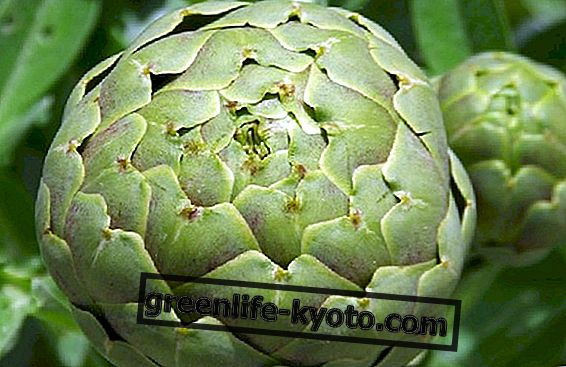
Chamomile, scientifically known as Matricaria recutita or Matricaria chamomilla, belonging to the Asteraceae family, is the well-known white and yellow little flower that punctuates fields, countryside and hills of various parts of Italy, where it often grows wild, almost like a pest.
The botanical name of Latin derivation, Matricaria, tells us instead of one of its most frequent uses: matricaria derives from " matrix ", among the various meanings there is " uterus ", with reference to the calming power during the menstrual cycle and the relative pains.
Its pleasant scent that also gave it the name - camomile comes from the Greek and means "apple of the soil", due to the smell similar to the rennet apple - makes it a nice and appreciated flower, ideal for young and old, especially for the preparation of herbal teas and infusions, but not only.
Preparation of chamomile infusion
To prepare a good chamomile infusion just take these ingredients :
> a couple of tablespoons of dried flowers or flower heads, which can also be grown at home (see below),
> a couple of cups of water
Preparation : boil the saucepan of water, turn off and leave to infuse five / seven minutes before filtering.
You can sweeten it with honey or add lemon, fennel seeds or cumin, lime or dog rose .
Use : sip hot just after dinner to help digestion, or before going to bed.
Attention : there are no particular contraindications linked to the intake of the chamomile infusion, but its abuse could even lead to opposite effects to those desired!
How to lighten hair with chamomile
Benefits of the chamomile infusion
Chamomile is not only beneficial for women: its properties make it an ideal flower to gently and naturally soothe various aches of a painful or nervous nature.
The very pleasant little flowers contain an active ingredient called azulene and a mix of other substances such as salicylic acid, oleic acid, stearic acid and alpha-bisabol.
These principles make chamomile a flower with a generally sedative and calming power, ideal in cases of anxiety, stress, nervousness ; also endowed with good anti-inflammatory properties, internal but also external, it reveals a calming remedy for pains of various origins, such as sciatica, lumbago, rheumatism, stiff neck .
Finally, the flavonoids present, eupatuletina, quercimetrina, and the coumarins, a skin which has discrete antioxidant properties, are responsible for the digestive and spasmolytic properties .
Therefore excellent for those who have problems with digestion, excess intestinal gas, muscle spasms linked to nervous factors . Recent studies have also shown the hypoglycemic effects, useful for lowering the level of sugar from the blood, as it inhibits the transformation of glucose into sorbitol, responsible, when in excess, for damage to the eyes, kidneys and nerve cells, which are found in people suffering from diabetes.
Suitable for children and babies, especially to calm colic or teething pains, chamomile is often associated with other plants and herbs, such as cumin, fennel, cloves, ginger, lemon, dog rose, linden.
Cultivation of chamomile
The species is widespread in Europe and Asia but also in other continents; easy to grow, it is a rustic species also suitable for poor, moderately saline, acid soils, and can be planted very well even in pots, on balconies or terraces.
Seeds are planted around February / March and its flowers are ready in late spring / summer. They are collected, dried, placed in the shade, then stored in hermetic glass containers, protected from light and moisture, ready to prepare an excellent natural infusion.













